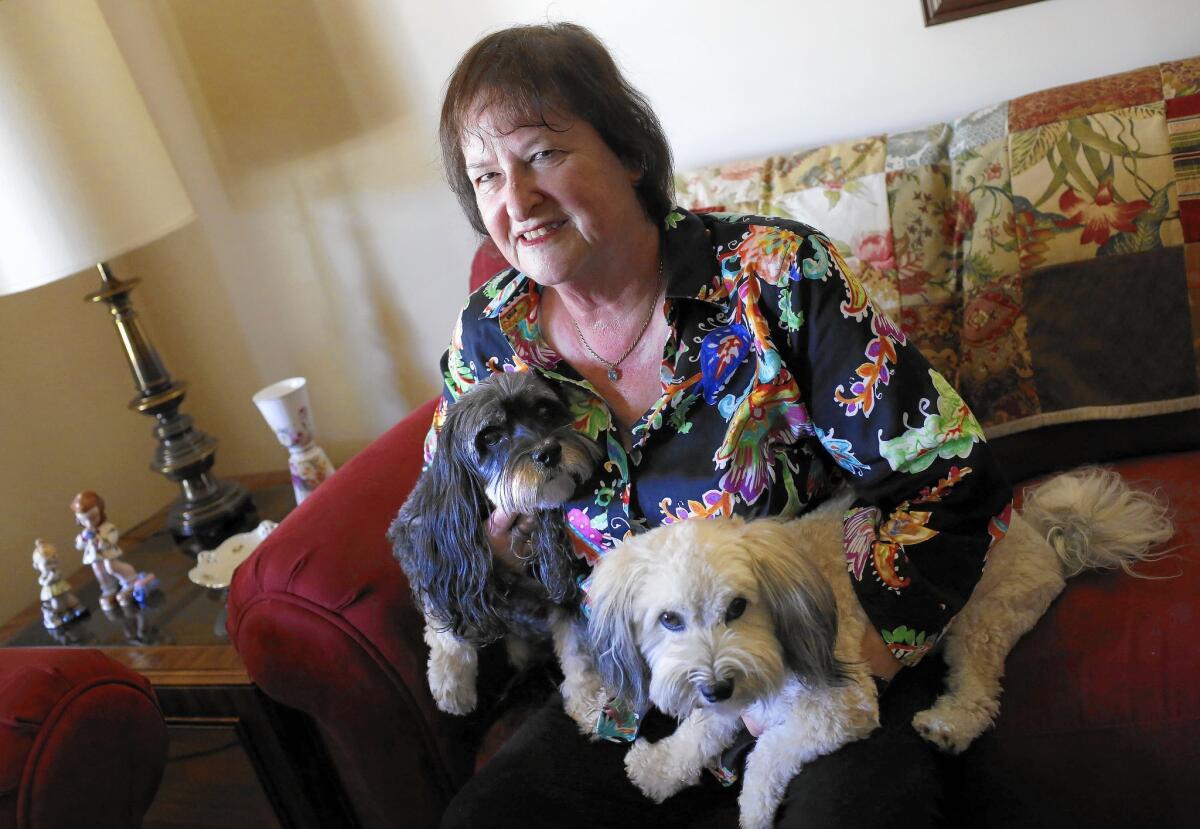Do teachers remember their students? The answer is yes

- Share via
Keith Johnson was a middling student at 93rd St. Elementary School.
That hasn’t kept his teacher, Barbara Seigel Stone, from holding him in her heart for 45 years.
I heard from Stone after she read my column about Johnson’s work with inner-city kids on a youth football team. “I believe Keith Johnson was in the third-grade class I taught,” she wrote.
That was in 1970, when Stone was a rookie teacher in Watts, fresh out of UCLA. Her Keith was “a sort of serious boy who liked school and liked to help me,” she recalled. She still has pictures of him in a play their class performed.
The boy that Johnson, now 52, recalls was an angry kid who fought a lot. As a child, he lived in a series of foster homes and went to more schools than he could count.
“I’m amazed that she actually remembers me,” Johnson said when I sent him Stone’s email. “How many students has she had, how many classes, how many years have passed? The fact that she remembered me all these years means it wasn’t just a student-teacher relationship, she really cared about me.”
I don’t want to burst his bubble, but “the awesome Mrs. Stone,” as he calls her, remembers many of the thousand or so students she taught in her 42-year career.
In fact, many teachers do. I know because I’ve heard from several over the years, after former students landed in my columns.
Students such as Dylan Fowler, a 26-year-old homeless heroin addict I wrote about in June.
Retired special-education teacher Arlene Seltzer remembers when he was a smiling tow-headed third-grader, dispatched to her classroom when other teachers couldn’t settle him down in class.
“He was disruptive because he didn’t know what to do with himself,” she wrote after another of Dylan’s teachers showed her my column. “Dylan was just one of those kids that needed some special attention. Please tell him that Mrs. Seltzer is thinking about him.”
::
Like Johnson, Fowler was amazed that his teacher still remembers him. “I guess I made an impression on somebody,” he said.
That’s no small comfort for a man who feels abandoned and is living on the street.
I can name every teacher I had from kindergarten to 12th grade. But it never occurred to me that teachers’ memories could stretch to accommodate us all.
Stone and Seltzer taught me that students leave a mark — and not just the eggheads or the superstars.
Selzer keeps photo albums of her students at her home in Colorado, where she moved after retiring 10 years ago. “I am constantly wondering what happened to my kids,” she said. “They were often the ones that other teachers found too troublesome.
“Sometimes the toughest kids teach you the most.”
And sometimes you don’t know you have touched a child until you hear from the grown-up years down the line.
Like the 30-year-old who contacted Stone on Facebook. “I remembered him because he and his brother were such brats,” she said. “He’s in the service now, and he emailed me to apologize for how he behaved in third grade.”
He gave her a list of teachers to apologize to. “He’d cut up in every class,” Stone said. “I was astounded that he was OK. And that it mattered so much to him to correct that.”
::
Both teachers said hearing from former students took them down memory lane.
Stone remembers struggling in those early years, when her school had meager resources and a revolving door. “So many people were teaching for a semester and leaving. I knew I was going to stick it out,” she said, “but I wasn’t sure how.”
Her principal helped, and veteran teachers took her under their wings. She threw out “the book learning and theory of teaching” she learned in college and looked for ways to connect her low-income students to the world beyond Watts.
She was so shy that it was hard to get up and speak in front of the class. “But I liked being with the kids so much — even the stinkers — that enthusiasm made me push to get everything I could for them.”
Seltzer also taught by breaking the mold. Like her students, she had once been the child who was slow to catch on. “When I was growing up, I couldn’t figure out how everybody else in the class understood something and I had no clue,” she said.
That sensitivity led her to special ed. “I went into regular teaching first,” she said, “but my philosophy was different than being told ‘Here’s your third-grade curriculum. Teach it.’
“I got in trouble sometimes for the way I did things. But my kids came first. I couldn’t see clear to not do what I knew would work.”
Their commitment reminds me that for all the finger-pointing we do when students don’t do well, we don’t often appreciate the investment that teachers make each day, and the lessons they teach that can’t be measured by a test score.
For Johnson, Stone’s class was a refuge from chaos. He came to school early and stayed late, desperate to become the teacher’s pet “because moving around as a foster kid, you don’t form those relationships,” he said.
Now that he is back in his third-grade teacher’s world, Johnson has learned a lesson he plans to share with the boys on his football teams:
“You go to school and you think it’s just the teacher’s job to be there. But you matter more to people than you think.
“To have a teacher remember you after so many years means you weren’t just another number; there was love in that classroom.”
Twitter: @SandyBanksLAT
More to Read
Sign up for Essential California
The most important California stories and recommendations in your inbox every morning.
You may occasionally receive promotional content from the Los Angeles Times.











